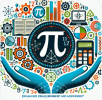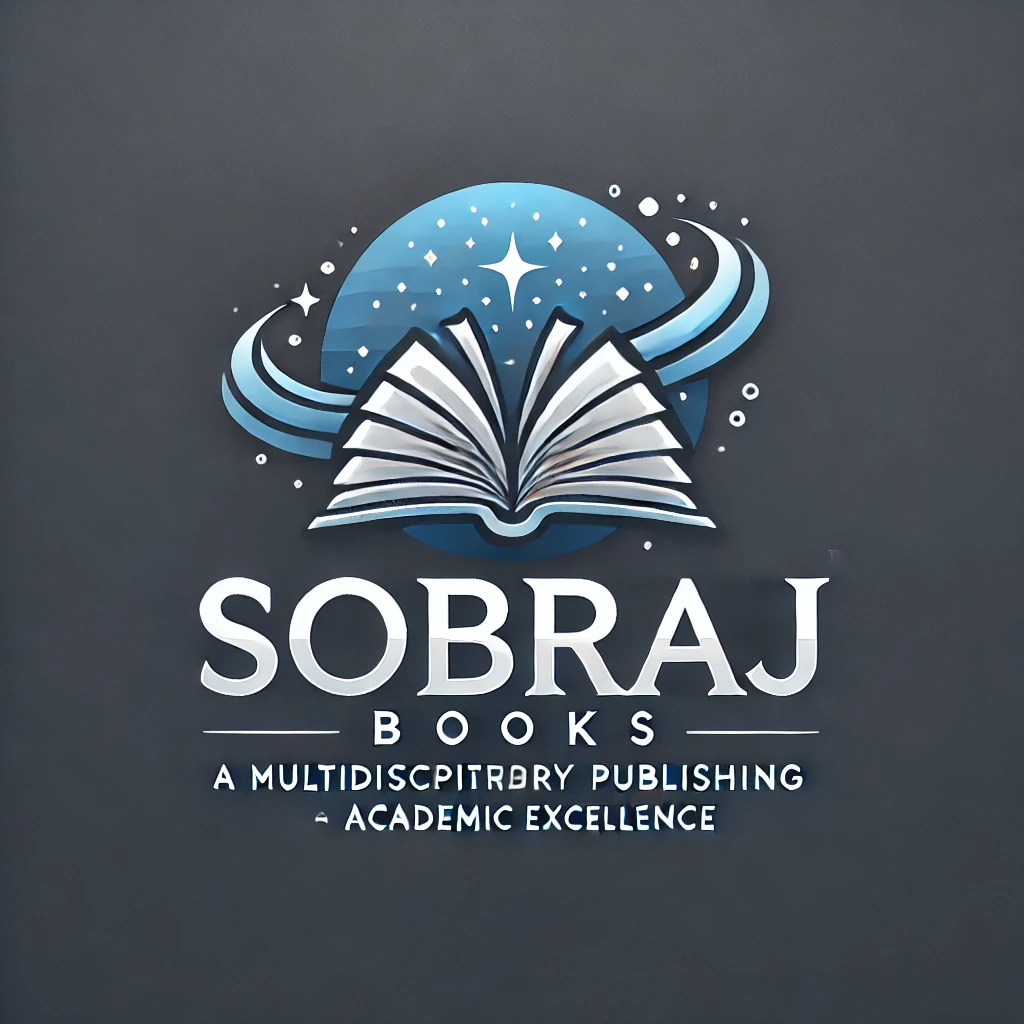Transforming Mathematics Education: Integrating Technology for Enhanced Engagement and Achievement
Keywords:
Mathematics education, technology integration, student engagement, digital tools, gamification, flipped classroom, social media, augmented reality, virtual reality, educational challenges.Synopsis
Transforming Mathematics Education: Integrating Technology for Enhanced Engagement and Achievement is a comprehensive exploration of how technology can revolutionize the teaching and learning of mathematics. This book provides educators, researchers, and policymakers with insights and practical strategies for leveraging digital tools to enhance student engagement and achievement in mathematics education.
Chapter 1 offers an introduction to the integration of technology in mathematics education, setting the stage for the transformative potential of digital tools in the classroom. It discusses the historical context, current trends, and the essential role technology plays in modern education.
Chapter 2 delves into the theoretical frameworks that underpin effective technology integration. It examines models such as TPACK (Technological Pedagogical Content Knowledge) and the SAMR (Substitution Augmentation Modification Redefinition) model, providing a solid foundation for understanding how technology can be meaningfully incorporated into mathematics instruction.
Chapter 3 focuses on enhancing student engagement through digital tools. It explores various platforms and applications that can make learning more interactive and engaging, emphasizing the importance of student-centered learning environments that foster active participation.
Chapter 4 introduces gamification in mathematics education, showcasing how game-based learning can motivate students and make complex mathematical concepts more accessible. The chapter provides examples of successful gamification strategies and their impact on student learning outcomes.
Chapter 5 examines the flipped classroom model, where traditional teaching methods are reversed, and students engage with instructional content outside the classroom while using class time for active problem-solving and discussion. The chapter highlights the benefits and challenges of implementing this model in mathematics education.
Chapter 6 explores the use of social media as a tool for collaborative learning in mathematics. It discusses how platforms like Twitter, Facebook, and specialized educational networks can facilitate peer-to-peer learning, resource sharing, and the development of a collaborative learning community.
Chapter 7 investigates the role of augmented and virtual reality in math instruction. It demonstrates how these immersive technologies can bring abstract mathematical concepts to life, providing students with hands-on, experiential learning opportunities that deepen their understanding.
Chapter 8 addresses the challenges and barriers to technology integration in mathematics education. It critically examines the obstacles that educators face, such as limited resources, resistance to change, and the digital divide, while offering solutions and strategies for overcoming these challenges.
Together, these chapters provide a holistic view of how technology can be harnessed to transform mathematics education, making it more engaging, effective, and accessible for all students. This book is an essential resource for those seeking to innovate and improve mathematics teaching and learning through the integration of technology.
References
Abidin, Z., Mathrani, A., Hunter, R., & Parsons, D. (2017). Challenges of integrating mobile technology into mathematics instruction in secondary schools: An Indonesian context. Computers in the Schools, 34(3), 207–222. https://doi.org/10.1080/07380569.2017.1344056
Abidin, Z., Mathrani, A., Parsons, D., & Suriadi, S. (2015). Opportunities and challenges of mobile learning for promoting mathematical literacy. In Australasian Conference on Information Systems (pp. 1–11).
Afifah, D. S. N., Nafi’an, M. I., & Manggar, D. A. (2023). The development of Adobe Flash CS6-based interactive media to improve numerical literacy skills for Madrasah Ibtidaiyah students. Jurnal Matematika Kreatif-Inovatif, 14(1), 75–85.
Aini, N., Jalmo, T., & Abdurrahman. (2020). The prospective of STEM education: Students’ perceptions about the role of interest growth in science literacy. Journal of Physics: Conference Series, 1572(1), 012083. https://doi.org/10.1088/1742-6596/1572/1/012083
Aliyu, J., Osman, S., Daud, M. F., & Kumar, J. A. (2021). Mathematics teachers’ pedagogy through technology: A systematic literature review. International Journal of Learning, Teaching & Educational Research, 20(1), 323–341. https://doi.org/10.26803/ijlter.20.1.18
Amam, A., Fatimah, A. T., Hartono, W., & Effendi, A. (2017). Mathematical understanding of the underprivileged students through GeoGebra. Journal of Physics: Conference Series, 895(1), 012007. https://doi.org/10.1088/1742-6596/895/1/012007
Azhari, B., & Fajri, I. (2022). Distance learning during the COVID-19 pandemic: School closure in Indonesia. International Journal of Mathematical Education in Science & Technology, 53(7), 1934–1954. https://doi.org/10.1080/0020739X.2021.1875072
Bray, A., & Tangney, B. (2017). Technology usage in mathematics education research – A systematic review of recent trends. Computers & Education, 114, 255–273. https://doi.org/10.1016/j.compedu.2017.07.004
Cahyono, A. N., & Ludwig, M. (2018). Teaching and learning mathematics around the city supported by the use of digital technology. EURASIA Journal of Mathematics, Science & Technology Education, 15(1), em1654. https://doi.org/10.29333/ejmste/99514
Fütterer, T., Hoch, E., Lachner, A., Scheiter, K., & Stürmer, K. (2023). High-quality digital distance teaching during COVID-19 school closures: Does familiarity with technology matter? Computers & Education, 199, 104788. https://doi.org/10.1016/j.compedu.2023.104788
Hardyanto. (2023, April 16). Merdeka belajar untuk revitalisasi bahasa daerah yang terancam. Sekertariat Kabinet Republik Indonesia. https://setkab.go.id/merdeka-belajar-untuk-revitalisasi-bahasa-daerah-yang-terancam/
Hermita, N., Wijaya, T. T., Yusron, E., Abidin, Y., Alim, J. A., & Putra, Z. H. (2023). Extending unified theory of acceptance and use of technology to understand the acceptance of digital textbook for elementary school in Indonesia. Frontiers in Education, 8, 958800. https://doi.org/10.3389/feduc.2023.958800
Hidayat, W., Rohaeti, E. E., Hamidah, I., & Putri, R. I. I. (2023). How can android-based trigonometry learning improve the math learning process? Frontiers in Education, 7(January), 1–13. https://doi.org/10.3389/feduc.2022.1101161
Johar, R., & Mailizar, M. (2020). Designing augmented reality-based teaching resource of three dimensional geometry. Journal of Physics: Conference Series, 1470(1), 012061. https://doi.org/10.1088/1742-6596/1470/1/012061
Lubis, A., Ritonga, A., Hia, Y., & Nasution, A. A. (2020). Online learning design at higher education: An example from mathematics classroom. Journal of Physics: Conference Series, 1462(1), 012004. https://doi.org/10.1088/1742-6596/1462/1/012004
Mailizar, M., & Fan, L. (2020). Examining Indonesian secondary school mathematics teachers’ instructional practice in the integration of technology. Universal Journal of Educational Research, 8(10), 4692–4699. https://doi.org/10.13189/ujer.2020.081038
Mailizar, M., Johar, R., & Lainufar. (2021). Exploring the potential use of GeoGebra augmented reality in a project-based learning environment: The case of geometry. Journal of Physics: Conference Series, 1882(1), 012045. https://doi.org/10.1088/1742-6596/1882/1/012045
Palancı, A., & Turan, Z. (2021). How does the use of the augmented reality technology in mathematics education affect learning processes? A systematic review. Uluslararası Eğitim Programları ve Öğretim Çalışmaları Dergisi, 11(1), 89–110. https://doi.org/10.31704/ijocis.2021.005
Pasani, C. F., & Amelia, R. (2021). Introduction of the integrative STEAM approach as a learning innovation in the COVID-19 pandemic in South Kalimantan. Journal of Physics: Conference Series, 1832(1), 012029. https://doi.org/10.1088/1742-6596/1832/1/012029
Safitri, Y., Mailizar, M., & Johar, R. (2021). Students’ perceptions of using E-comics as a media in mathematics learning. Infinity Journal, 10(2), 319–330. https://doi.org/10.22460/infinity.v10i2.p319-330
Verbruggen, S., Depaepe, F., & Torbeyns, J. (2021). Effectiveness of educational technology in early mathematics education: A systematic literature review. International Journal of Child-Computer Interaction, 27, 100220. https://doi.org/10.1016/j.ijcci.2020.100220
Weinhandl, R., Lavicza, Z., Hohenwarter, M., & Schallert, S. (2020). Enhancing flipped mathematics education by utilising GeoGebra. International Journal of Education in Mathematics, Science & Technology, 8(1), 1. https://doi.org/10.46328/ijemst.v8i1.832
Yusri, W., & Jamaris, S. (2021). Integration of digital technology in mathematics learning. International Journal of Humanities Education & Social Sciences (IJHESS), 1(3), 144–151. https://doi.org/10.55227/ijhess.v1i3.60
Zhong, B., & Xia, L. (2020). A systematic review on exploring the potential of educational robotics in mathematics education. International Journal of Science and Mathematics Education, 18(1), 79–101. https://doi.org/10.1007/s10763-018-09939-y






